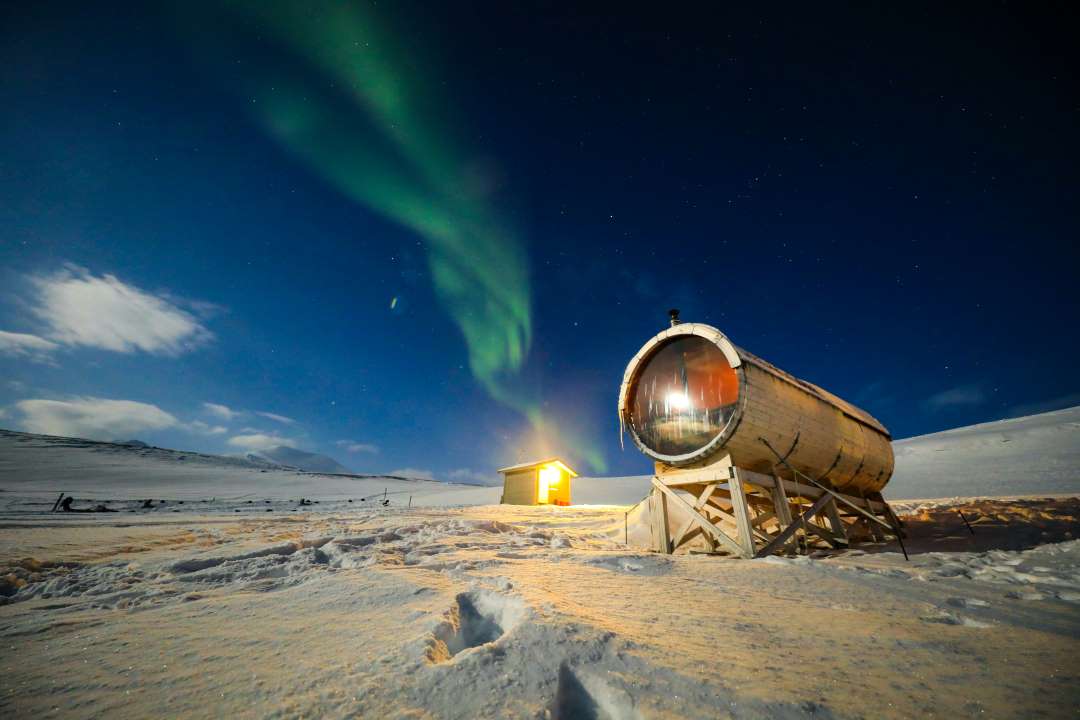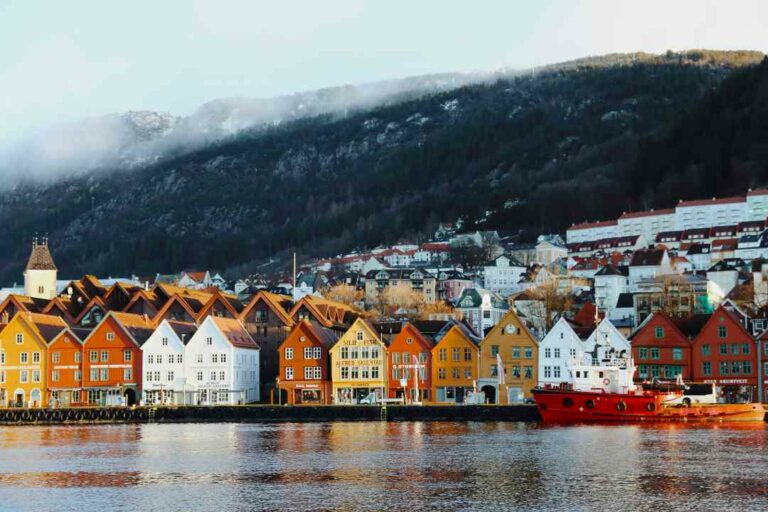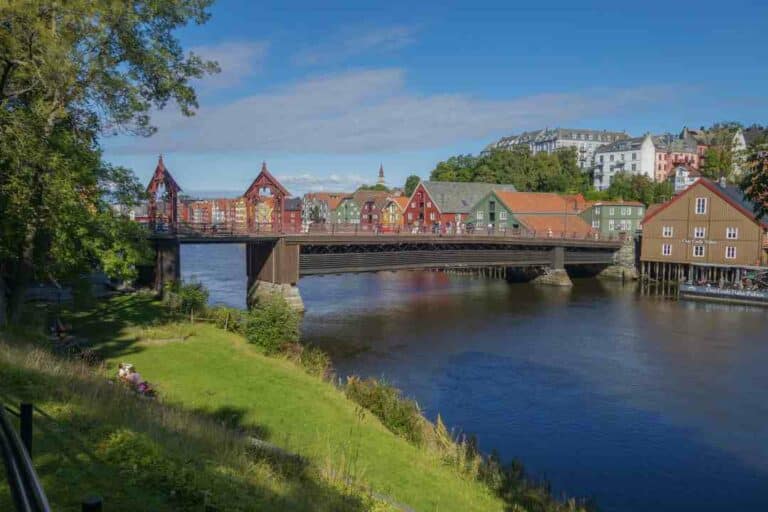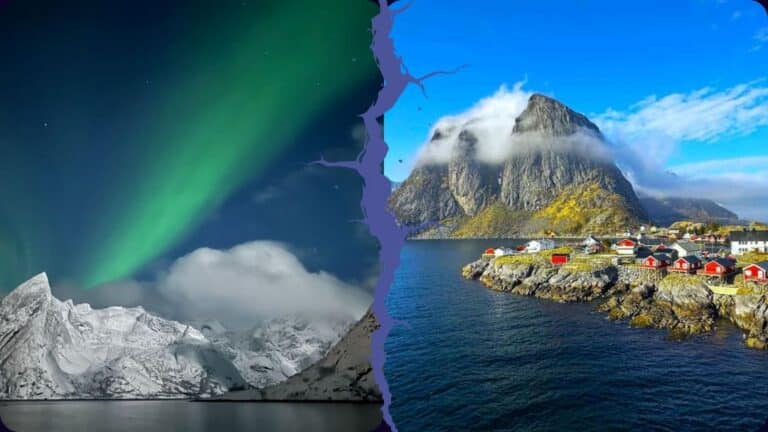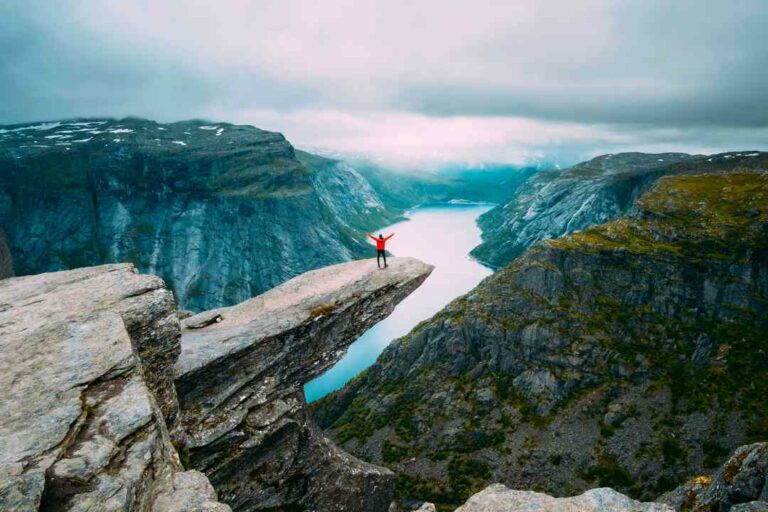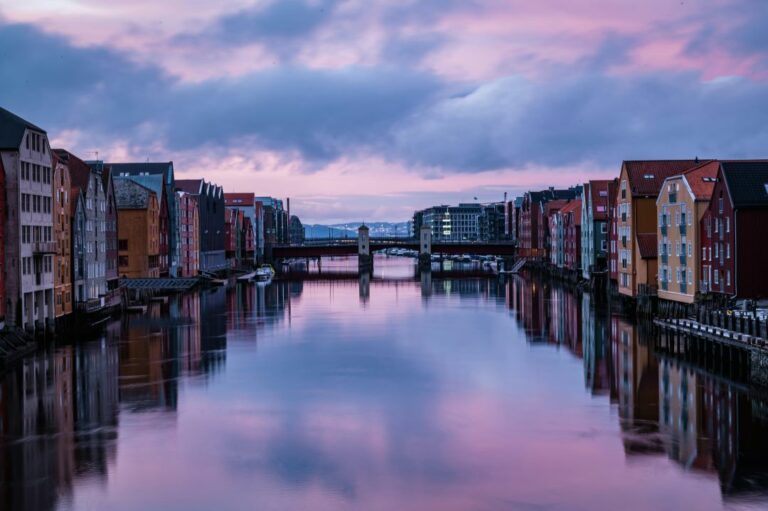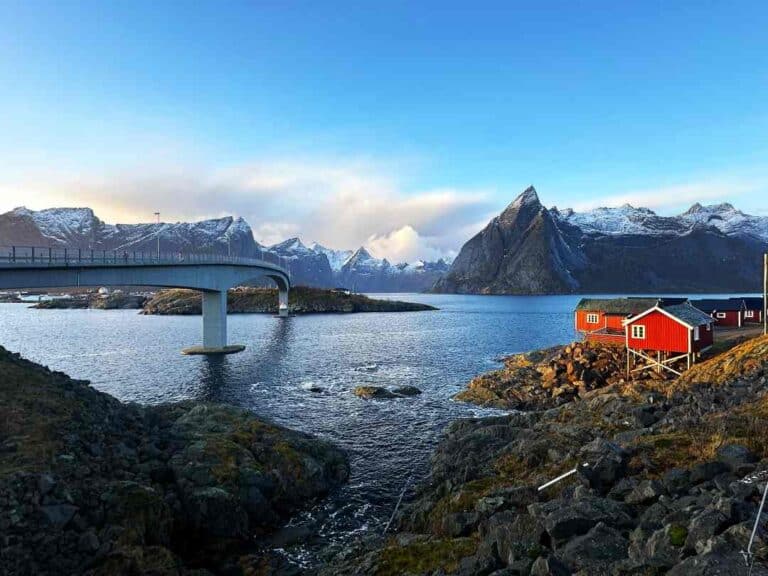Northern Lights Svalbard: Polar Night, Dancing Lights, and Snowy Adventures
Winter in Svalbard is not for the faint of heart. Not necessarily because of the Arctic winter (although it is really cold. And dark, despite the Northern Lights Svalbard offers).
As a Norwegian native, I am completely fascinated with Svalbard, and my favorite adventures there were dog sledding in winter and descending into a deep, dark ice cave in the middle of nowhere. That is the darkest dark I have ever experienced!
But back on track, the reason you need a strong heart to go to Svalbard in winter is simply that it is so incredibly beautiful that it might hurt.
Svalbard is the land of the Midnight sun in summer when the sun does not set for almost four months. In return, in the winter – the sun does not come up at all, and the island ventures into the famous Polar Night.
This means that traveling to Svalbard in winter allows you to experience the Polar Night in all its splendor with a soft blue light (almost daylight-ish); you can see your own breath when you are breathing outside, and you can chase the magic Northern Lights, the Aurora Borealis.
The Polar Night In Svalbard
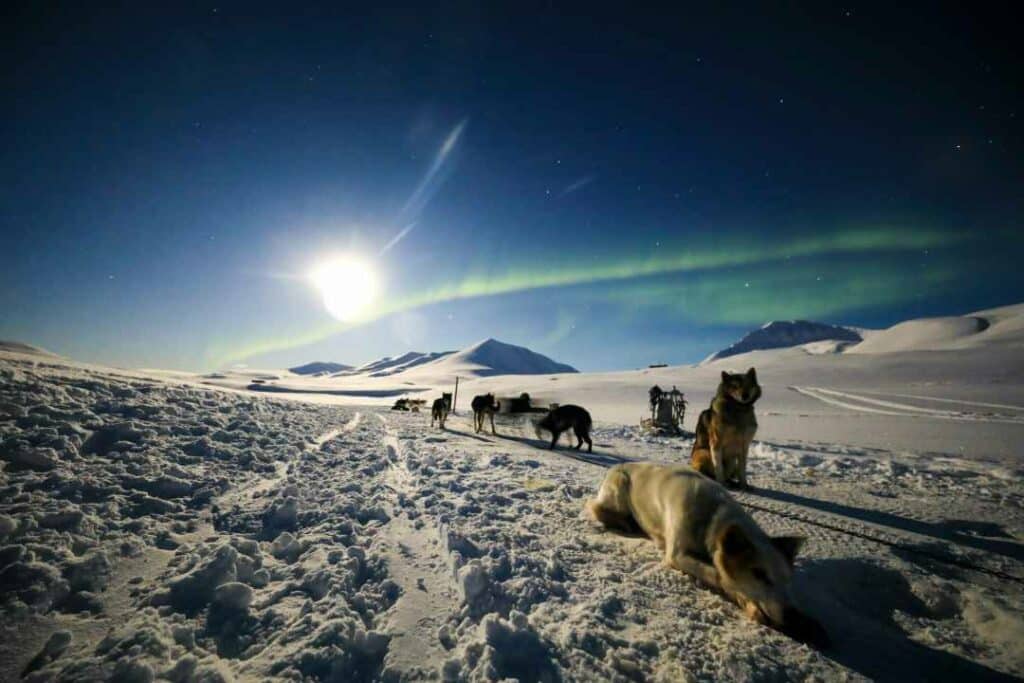
The polar night descends on the Svalbard tundra from the end of October.
The official period of Polar Night and darkness in Longyearbyen (the capital of Svalbard) runs from 26 October to 16 February every year, so almost four full months.
In this period, the sky is regularly lit up by waves of light in blues, greens, purple, and, every now and then, some pink. Welcome to the polar night, where darkness reigns and the aurora borealis is on full display.
So don’t let the lack of sunlight scare you – winter in Svalbard is magical.
Even without the sun, the snow still makes the soft daylight feel like “light”; we call it the “blue lights of winter” – you simply have to experience it to feel that in your heartstrings.
📍 Two highly recommended stays in Svalbard:
- Iconic stay: Basecamp Hotel
- Budget stay: Coal Miners Cabin
Chasing the Celestial Dance: Aurora Borealis in Svalbard
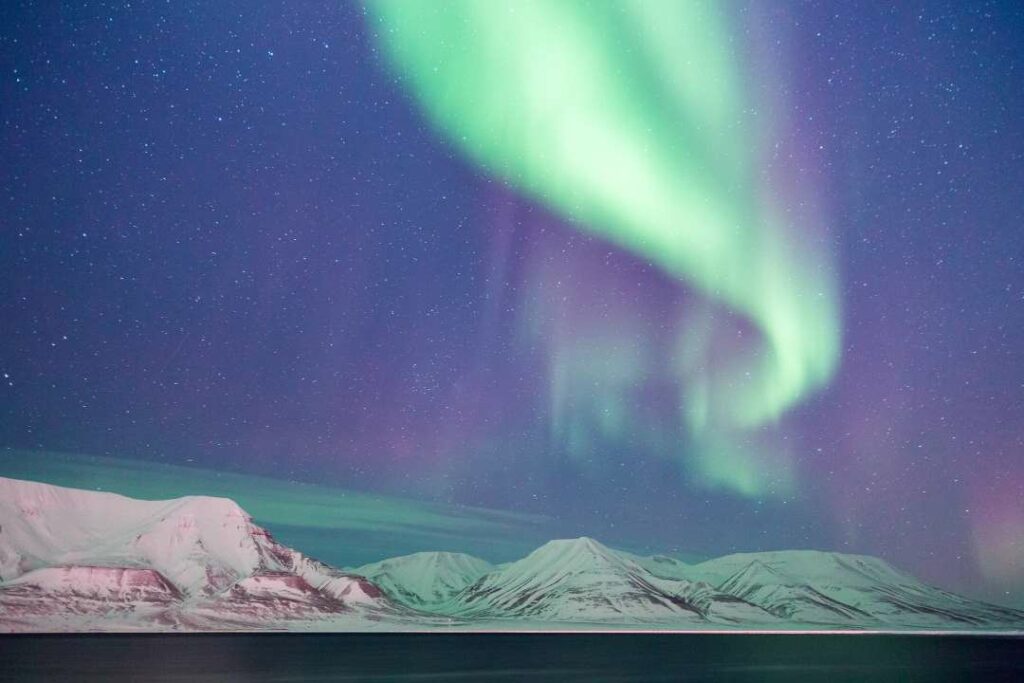
This frozen frontier isn’t just the realm of polar bears (yep, this is where they live) and midnight suns—it’s also one of the world’s premier destinations for witnessing the mesmerizing spectacle of the Aurora Borealis, or Northern Lights in Norway.
What sets Svalbard apart in the aurora-chasing game is its unique position within the Arctic Circle. The Aurora can be seen occasionally from late September, and then, from late October to mid-February, the sun doesn’t rise above the horizon at all.
At 78° North, this is one of the northernmost inhabited areas on Earth (the North Cape in mainland Norway is at 71° North, for comparison).
This extreme latitude offers visitors an unparalleled opportunity to witness the aurora in its full glory, with a season that stretches from October to February, plunging the islands into a prolonged polar night.
During this period, the sun never rises above the horizon, creating perfect dark-sky conditions for aurora viewing.
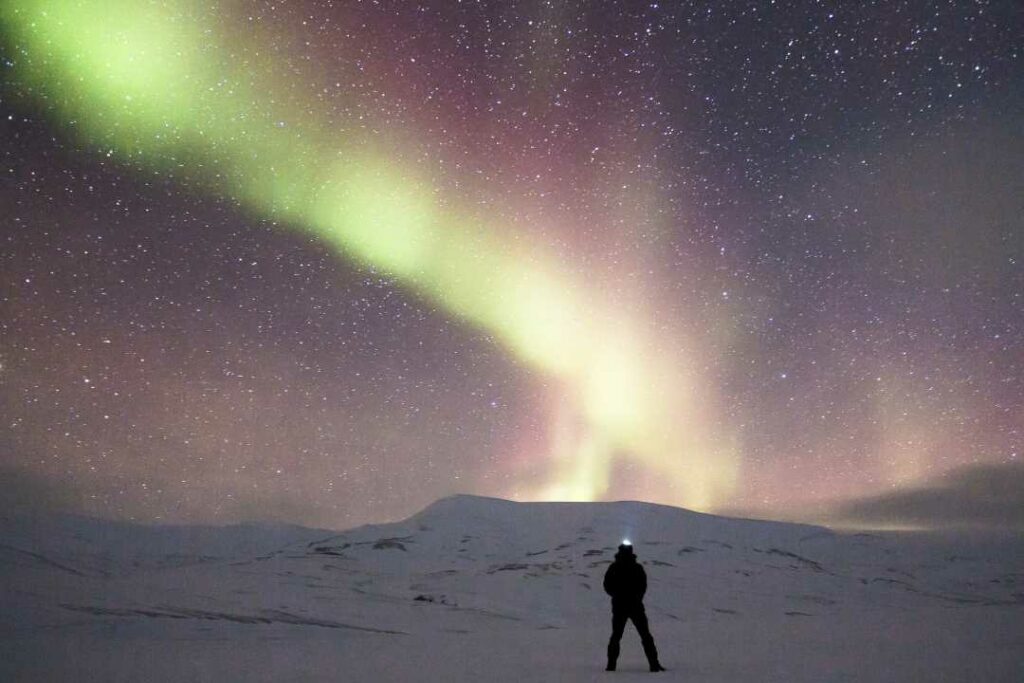
The absence of light pollution in most of Svalbard further enhances the experience, allowing the lights to shine in stark contrast against the inky black sky.
The frequency of auroral displays in Svalbard is remarkably high. On clear nights during the dark season, your chances of spotting the Northern Lights are excellent, with some estimates suggesting visibility on up to 80% of cloud-free nights.
This reliability makes Svalbard a top choice for aurora enthusiasts who want to maximize their chances of a sighting.
The palette of the aurora in Svalbard can be truly breathtaking. While the most common color is a ghostly green, caused by oxygen atoms in the upper atmosphere, lucky viewers might also witness shades of pink, purple, and even red.
These rarer colors occur when the solar particles interact with nitrogen at different altitudes. The result is a dynamic, ever-changing light show that can range from subtle, wispy curtains to dramatic, pulsating displays that seem to engulf the entire sky.
How To Best Experience The Aurora Borealis In Svalbard
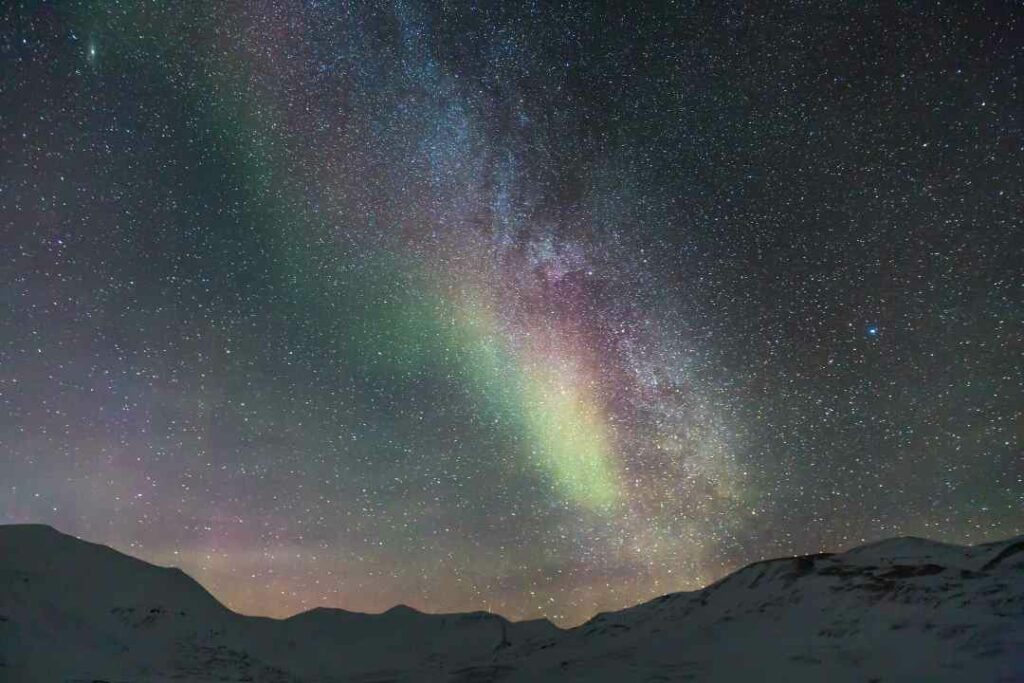
To best position yourself for this celestial spectacle, these are my best tips:
- Get away from Longyearbyen: While the main settlement offers some viewing opportunities, heading out into the wilderness provides less light pollution, darker skies, and more immersive experiences.
- Go high: Higher ground often provides clearer views and a wider panorama of the sky. Many tour operators offer snowmobile or dog sledding trips to elevated viewing spots.
- Face north: The auroral oval typically appears in the northern sky, so orient yourself accordingly.
- Be patient and dress like the Michelin Man: The aurora can be fickle, appearing suddenly and lasting anywhere from minutes to hours. Svalbard’s winter temperatures can plummet to -20°C or lower, so proper Arctic gear is essential.
- Consider a photography tour: Capturing the aurora on camera requires specific techniques. Joining a photo-focused excursion can help you immortalize the experience.
What truly sets the Svalbard aurora experience apart is the backdrop. Here, the ethereal lights dance above a landscape of glaciers, frozen fjords, and jagged mountain peaks.
In the depths of winter, this alien terrain is bathed in the soft blue light of the polar night, creating an otherworldly atmosphere that feels like stepping onto another planet.
The Aurora Borealis over Svalbard isn’t just a light show—it’s a profound connection to the rhythms of our planet and the vast cosmos beyond.
As you stand beneath the swirling curtains of light, surrounded by the pristine Arctic wilderness, you’ll understand why people journey to the ends of the Earth for this singular experience.
In Svalbard, the Northern Lights aren’t just seen; they’re felt, a visceral reminder of our small place in the grand tapestry of the universe.
Iconic Things To Do In Svalbard In Winter
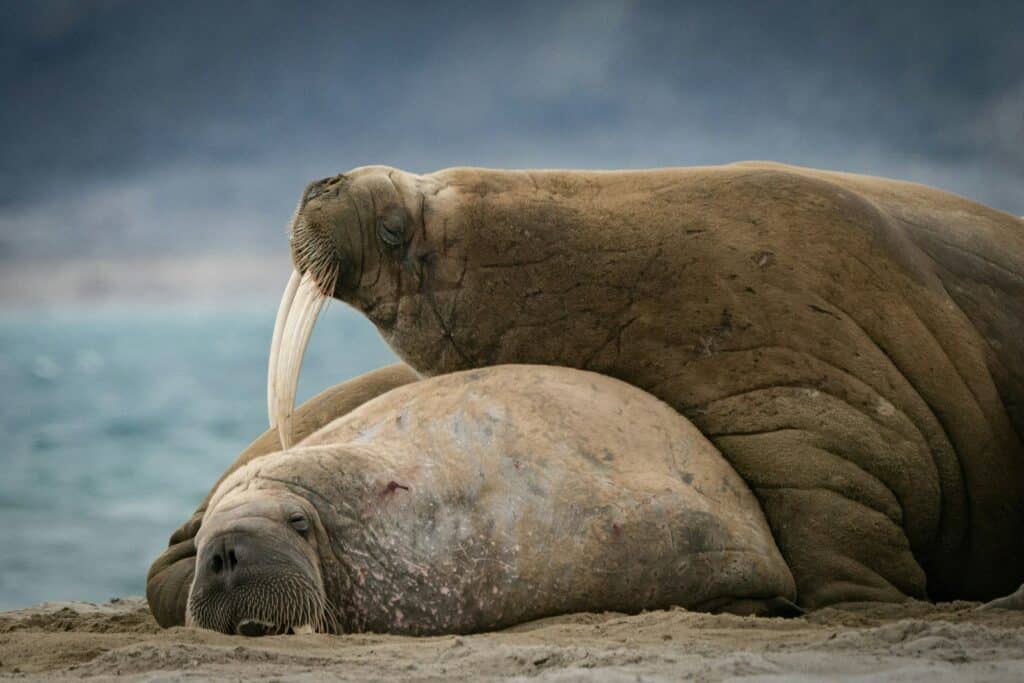
Epic adventures are not just found in Svalbard in the wintertime; some of them can also be had on the Norwegian mainland further south.
What sets Svalbard apart is the combination of the spectacular and completely unique scenery and the amazing things you can do in the middle of this white desert-like tundra, which is covered in frozen white for half the year.
Most activities in Svalbard do require a guided tour, as very few of us visiting really know how to handle the nature, elements, and wildlife in a place like Svalbard.
So, if you visit in the winter, you can explore the frozen tundra on epic adventures listed below.
Other winter activities include:
- Dog sledding across frozen fjords
- Snowmobiling under the stars (or Northern Lights)
- Ice caving in ancient glaciers
- Hunting for the elusive polar bear (with cameras, not guns, please)
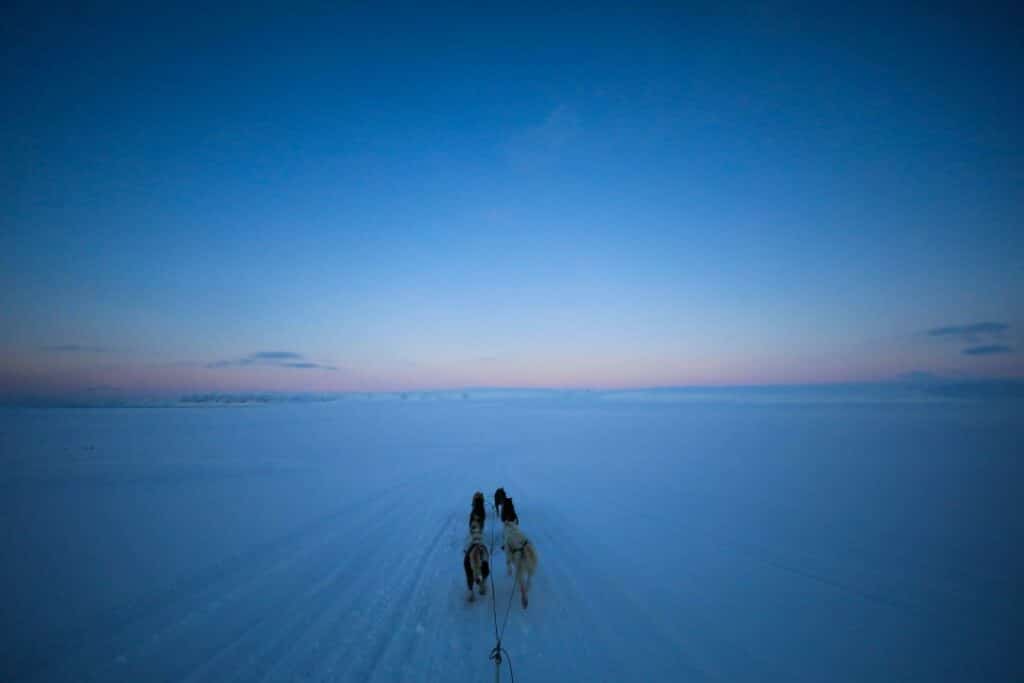
If you can travel to Svalbard in late February, you will be in for a treat. as the sun returns after being dormant below the horizon, the whole “capital” of Longyearbyen heads into a week-long celebration called Solfestuka (the Sun Celebration Week).
This is a special experience you will treasure even more (and dowt worry, the Aurora Borealis can still appear. The nights are dark for months yet).
Just remember to pack your warmest clothes – temperatures can drop to a teeth-chattering -20°C (-4°F) or lower.
But as they say in Svalbard, there’s no such thing as bad weather, only bad clothing choices (actually, we say that all over Norway).
Svalbard Islands: Land Of The Polar Bears
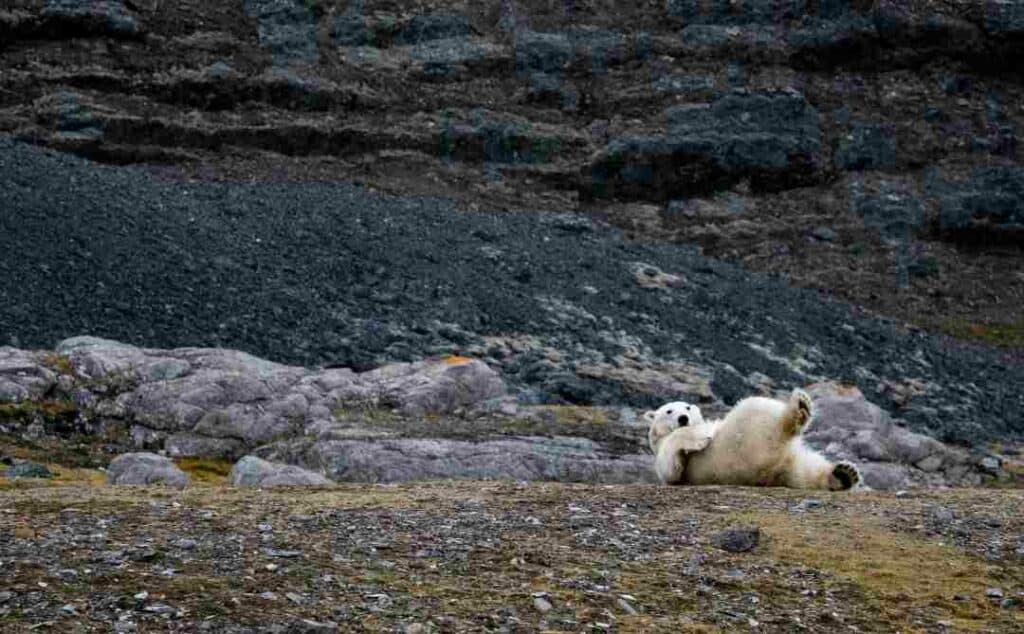
Svalbard is a vast island group far north of the Norwegian mainland, way up into the polar north on the way to the North Pole. Norway shares this island group with Russia, and the Norwegian capital on the islands is Longyearbyen.
Svalbard is relevant because it used to be a marine catching and trade hub in the Polar Sea. Later, coal was discovered, and the extensive coal mining business started in Svalbard in 1905.
Due to its proximity to Norwegian territory (when it was not yet Norwegian territory), Norway was awarded Svalbard through the 1925 Svalbard Treaty.
The mining business has declined a lot in the last decades, and is scheduled to stop in 2025. Today, Svalbard is instead a center for many research stations, and not surprisingly, it is a popular exotic Arctic destination for adventure travelers.
PS: this is where you find the polar bears. Contrary to myth, there are no polar bears on mainland Norway, only up here. Consequently, no one walks around Svalbard without weapons, as you might run into a polar bear when you least expect it.
So, what adventures can you embark on in polar remote Svalbard?
Things to do in Svalbard in the winter
- Go dog sledding on snow
- Embark on a snowmobile expedition
- Decent into deep ice caves
- Visit Svalbard Brewery, the world’s northernmost brewery
- See the Global Seed Vault
Wrap-Up Northern Lights Svalbard
Witnessing the Aurora Borealis in Svalbard is more than just a bucket-list experience—it’s a journey to the edge of the world that rewards visitors with nature’s most spectacular light show.
The unique combination of prolonged darkness, pristine Arctic landscapes, and frequent auroral activity makes this remote archipelago an unparalleled destination for Northern Lights enthusiasts.
You can be gazing at the lights from a dog sled, the deck of a ship in an ice-locked fjord, or from the top of a snow-covered mountain; Svalbard offers a front-row seat to the magic of the aurora.
It’s a place where the boundary between Earth and sky blurs eight months of the year, and for those seeking the ultimate Aurora Borealis experience, Svalbard invites you adventurers who are ready to embrace the almost painful beauty of the Arctic.
Related blog posts:
113+ Incredible Things To Do In Norway

